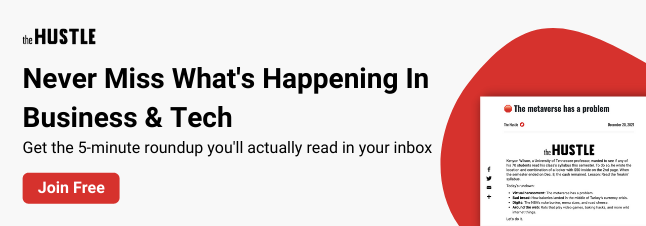As the field of economics has evolved, one thing that has become clear is how people’s emotions can influence them to behave in ways that defy established economic principles. The study of this phenomenon is what behavioral economics is all about.
For entrepreneurs, understanding behavioral economics is key to figuring out why clients behave the way they do. This allows businesses to form better relationships with customers and offer them the value they need.
This guide details the basics of behavioral economics, including key concepts and theories, and offers examples of how customers make purchasing decisions.
Table of contents:
- What is behavioral economics?
- History of behavioral economics
- Behavioral economics concepts and theories
- Importance of behavioral economics
- Behavioral economics examples
What is behavioral economics?
Behavioral economics is a branch of economics that studies the relationship between human behavior and economic decisions.
Unlike traditional economics, which relies on an ideal world where people exhibit perfect self-control and follow a rational process to make their decisions, behavioral economics explores real-world scenarios of people behaving irrationally.
The goal is to understand why and how factors like emotions, mental biases, and social context play such an important role in decisions about the production, distribution, and use of goods and services.
According to the rational choice economic theory, where people make decisions based on self-interest, a person with limited money would spend it on things essential to their well-being, like healthy food and simple clothing. However, this behavior is unlikely for the average person.
Because of emotional triggers or other external incentives, people end up spending money on unnecessary things even when they’re trying to save money. Like splurging on a night out because they worked hard all week or buying an expensive bag because they have fond memories associated with the brand.
Behavioral economists study these irrational decisions and formulate theories to explain them.
History of behavioral economics
Even though behavioral economics is considered a relatively new field of study, it has its roots in the 18th and 19th centuries, when classical economists like Adam Smith and Vilfredo Pareto touched on psychological concepts like loss aversion in their books on economic theory.
After this initial consideration, the psychological explanations in economics were mostly ignored. That’s because many economists at the time didn’t agree with applying social science concepts to mathematical economic models.
However, during the mid-20th century, psychologists like Amos Tversky and Nobel Prize winner Daniel Kahneman began to delve into how risk and uncertainty created biases that affected the decision-making process. Based on these findings, economists began reconsidering the impact of behavioral sciences on classical economic theory.
These developments led to the formation of several theories that are the bedrock of modern behavioral economics.
Behavioral economics concepts and theories
Since the establishment of the field of behavioral economics, several theories have been developed to modify classical economic concepts based on human psychology.
Here are a few principles that provide insight into why decision-makers often stray from rational thought processes.
Nudge theory
This concept is based on manipulating people’s choices to drive them toward a specific conclusion.
Nudging can apply to individuals or groups. Their thought processes are guided through indirect suggestions that “nudge” them (without being obvious) to a decision that may not be their rational choice.
An example would be putting a particular food item as the first option on a restaurant menu or moving a preferred option to the top of a list of choices on a form. These examples make the preferred option the easier choice that many people would instinctively pick rather than spending extra time and effort to consider other options.
Bounded rationality
This is based on the idea that individuals make decisions based on their limited knowledge and cognitive abilities. These limitations cause people to use mental shortcuts (also known as heuristics) to arrive at solutions they believe are satisfactory but are often not the best possible results.
For example, some people would only consider size and color preference as their deciding factors when buying clothes because that’s all they require to make a rational choice. However, there are several other factors they can use to make a better decision, like price, fabric type, tailoring quality, and sustainability.
Choice architecture
Choice architecture is the concept that the decision-making environment and the presentation of product options can influence people’s purchase decisions.
This particular idea is commonly applied by displaying complementary products together to entice consumers into buying them both when their initial plan was to buy only one. For example, displaying moisture-wicking socks right next to hiking boots at a clothing store can drive sales of both items.
Mental accounting
Mental accounting has to do with people making decisions about money not based on its value but on the circumstances surrounding its use.
For example, a person would be more willing to spend $100 if they received it as a gift rather than if it came from their wages. Another example is spending the usual sum of money during grocery shopping to buy more items when there’s a discount instead of using the discount as an opportunity to spend less.
Richard Thaler, Nobel Prize winner and one of the founders of modern behavioral economics, developed this concept to explain how people think of value in relative instead of absolute terms.
Cognitive bias
When people draw conclusions based on personal experiences, beliefs, or preferences, they are expressing a cognitive bias. This means their decisions are based on their perception of reality rather than a rational reasoning process.
For instance, someone who believes they have good luck with the color blue may lean toward a blue model when buying a car instead of focusing on other factors, like pricing, size, and features.
There are many different types of cognitive bias, but a few of the more common ones are:
- Confirmation bias, where a person interprets or remembers information in a way that supports their existing beliefs (e.g., a shopper with a preferred brand only recalling positive reports about the brand)
- Sunk-cost fallacy, where a person continues to invest in something regardless of its risk because they’ve already committed resources to it (e.g., someone renewing their gym membership despite not going in months)
- Overconfidence effect, which makes people overestimate their skills and ability to make the right decisions (e.g., a person with inadequate tech knowledge attempting to fix a software issue instead of contacting the vendor)
Herd mentality
This is the idea that people’s decisions are based on the behavior of others. This usually manifests as an individual making the same choice as everyone around them, regardless of whether it’s a rational choice.
This behavior comes from wanting to feel a sense of belonging and the willingness to take irrational steps to remain a part of the group. Like someone going out with friends and ordering the same type of drink everyone else picked, even though they can’t really afford it.
Discrimination
Discrimination also influences human behavior in decision-making, with people more likely to make choices based on which of the available options they dislike the least.
The cause of the dislike may be real or perceived, but it’s usually enough to sway people from what can be considered a rational choice to one that they’re more comfortable with.
An example would be refusing to buy products from a store because of the owner’s gender, regardless of the fact that the store has lower prices and a better return policy than its competitors.
Importance of behavioral economics
As a field of study, behavioral economics forms a bridge between psychology and economics with the purpose of explaining the real-world economic behavior of human beings.
This in-depth understanding is necessary for businesses to design products and marketing strategies in a way that drives sales while helping customers make better economic decisions.
This could be by nudging customers toward products that fit within their budget or designing payment options that make it easier to deal with impulse purchases.
By helping their customers make better purchasing decisions and subtly driving positive behavior change, businesses can build relationships driven by delivering value and improving customer well-being.
However, there is also the risk that businesses can apply these concepts to influence people into making unsound purchases.
Behavioral economics examples
The insights from behavioral economics can be applied by businesses that want to deliver value to their customers in a way that increases revenue.
Vikas Kaushik, CEO of TechAhead, an app development agency, says behavioral economics “has helped us remain ahead of the curve in the rapidly changing digital landscape by helping us understand the psychology of our customers and end users.”
For example, they increased engagement and retention rates by making changes to mobile app interfaces that nudged users in the right direction. This increased the success of apps they developed for their clients.
Behavioral economics can also give businesses a better understanding of reports on customer trends and identify why they exhibit certain behaviors.
For instance, HubSpot’s 2023 State of Consumer Trends report reveals that 69% of consumers prefer to shop in-store despite the convenience and ease of use of other platforms, like online stores and social media.
Observing this trend from a behavioral economics lens can reveal that this preference may be because of biases that affect how consumers view each shopping medium. Based on this knowledge, ecommerce businesses can open physical stores or partner with existing shops to ensure they give customers what they want.
In today’s business environment, where everyone is looking for a way to edge out the competition and stand out, applying these economics concepts might be the perfect way to win the hearts and wallets of your customers.









